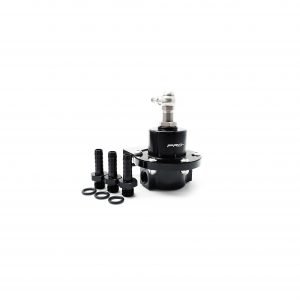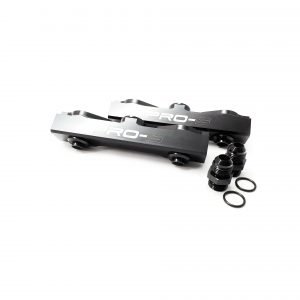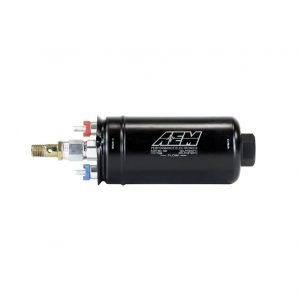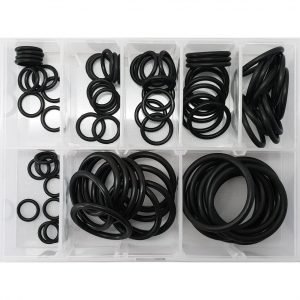Fuel Products
Fuel Products – As with any automobile, the components of the fuel system are the most integral part to its operation. So it becomes vital that each part works perfectly in harmony with each other for a smooth driving experience. Of course, to do such, one must have the knowledge of the individual components of a fuel system so they can discern when it’s time to replace such parts. Here at ProSpeed we can help you do just that.
Why do we need to change a fuel filter?
A fuel filter’s most basic function is to filter the fuel that passes through the system. Dirt and other sediments can clog the system and it is the filter’s function to sieve all of the sediments before the fuel reaches the rest of the system and becomes combusted. However, the accumulation of dirt in the filter over time will eventually clog the system which results in the engine running less efficiently. In effect, fuel filters need to be changed at certain intervals usually recommended by the manufacturer.
How to change a fuel filter?
To change a fuel filter on gasoline vehicles, you will need to locate the fuse box first. The steps afterwards lead to the fuel filter’s replacement.
- Remove fuel pump’s fuse – To relieve the pressure from the fuel system, you will need to run the engine with the fuel pump turned off. To do so, its fuse needs to be removed. Locate the fuse in the interior. Checking the owner’s manual will help show the exact position of the fuse in your vehicle.
- Ensure parking brake is engaged – Because you will be running the engine with the fuel pump turned off, be sure that the vehicle if automatic is on park and if mechanical is has its parking brake engaged as a precautionary measure.
- Run the engine – The leftover fuel should be enough to help power the engine for a couple of minutes. When letting the engine run, make sure you don’t do so until the vehicle dies. Literally, a minute or two should be enough time to relieve pressure.
- Insert the fuel pump’s fuse once again – Re-insert the fuse of the fuel pump and make sure that the cover is back on when you leave it. Make sure not to start the engine again once the fuse is in place.
- Disconnect negative terminal on the battery – As a precautionary measure, disconnecting the battery will ensure prevention of the engine starting while you change the filter.
- Find the fuel filter even if it means jacking up the vehicles – The fuel filter is normally found along the fuel line and on the underside of the car. You may need to use a jack if to lift the car to locate and access it.
- Remove fasteners on fuel filter’s – Expect some of the fuel to drip out so have a bucket ready underneath to catch any drips and spills. Locate the fasteners on the filter’s sides and pop them out with a screwdriver if necessary.
- Take out the fuel lines on the filter – To remove the fuel lines, simply slide them out of the filter until each end is out. Expect some fuel spill at this stage.
- Remove old filter – Most of the time, these can easily slide out. But some vehicles will have a bolt that you may need to remove before accessing the filter.
- Slide new filter into the bracket and fasten to the fuel lines – The filter should slide easily into the bracket without force. If force must be used, it may not be the correct model or diameter. Slide the fuel lines on the front and the back of the filter.
- Lower vehicle from jack stands if necessary and reconnect battery -Remember to only reconnect the battery as a final step once filter and fuel lines are attached and the car safely on the ground.
How long does a fuel filter last?
Normally, fuel filters are meant to last around two years or 30,000 miles. However, on newer models, these can last even longer. A quick trip to the mechanic for a fuel pressure test will determine the PSI that the fuel pump is generating which is normally 30 to 60 PSI for fuel-injection modes.
What is a fuel pump and how long does it last?
Found in the fuel tank, fuel pumps are responsible for sending fuel from the vehicle’s tank to its engine. A fuel pump essentially works by drawing fuel out of the tank and into the engine. This component may be a vital one but is meant for some roughing out and should only be replaced when it’s maxed out. Usually, once the current fuel pump has reached a 100,000 miles mileage, it may be wise to have it replaced to cut costs in the log run.
How do I know when to change my fuel pump?
A faulty fuel pump will show a set of symptoms which are most commonly the following:
- Makes more noise than usual – A fuel pump that has become subjected to the wear and tear of the vehicle will affect its bearings. While fuel pumps normally emit a slight quiet hum, anything close to a buzzing, whining or chattering in the component is a sign that the pump needs to be replaced.
- Difficult to start the engine – Any sputtering or difficulty starting the engine means that there isn’t sufficient fuel reaching the engine. A faulty fuel pump could mean it is not pumping enough fuel into the fuel lines. However, a clogged filter could also be the culprit behind difficulty starting an engine.
- Engine does not run smoothly – A bad fuel pump can mean that the engine is not receiving enough fuel, thus under-fueling occurs and the vehicle ends up running roughly. The engine will also exhibit signs like misfires, stalling, power loss, poor acceleration and even lower fuel efficiency. However, these problems are also a common symptom in faulty spark plugs and clogged fuel injectors.







